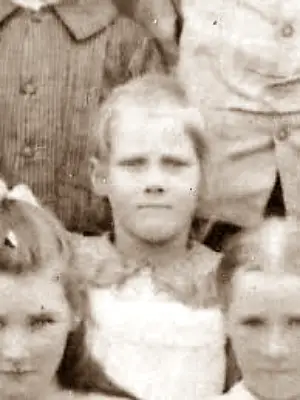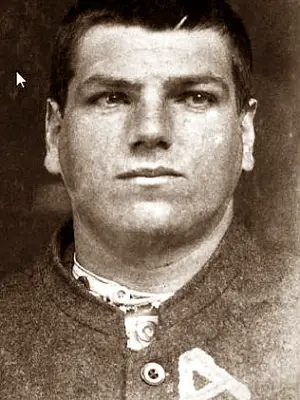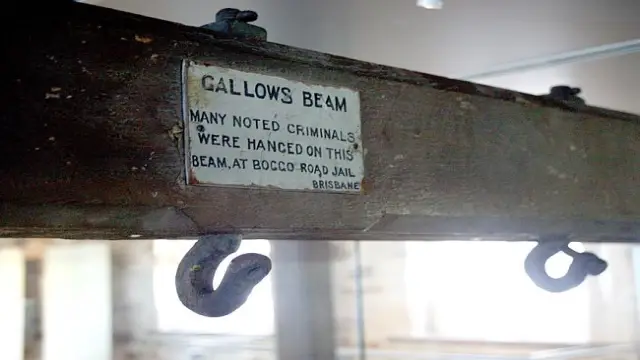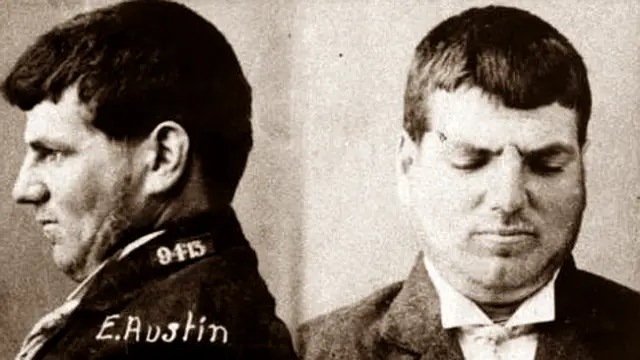In the annals of Australian criminal history, few stories are as chilling as that of Ernest Austin, the last man to be executed at Brisbane’s notorious Boggo Road Gaol. His heinous crime, the brutal murder of 11-year-old Ivy Alexander Mitchell in 1913, not only shocked the nation but also left a haunting legacy that continues to echo through the halls of the now-closed prison. This blog post delves into the life of Ernest Austin, the crime that sealed his fate, and the ghostly tales that have emerged in the years since his execution.

Frantic Father
On the evening of June 8, 1913, Ivy Alexander Mitchell, a lively 11-year-old girl, went missing after a day of playing with friends. As dusk fell, her father, a local farmer, grew increasingly worried. When Ivy failed to return home, he and his son grabbed a lantern and set out to search for her, heading towards a nearby school.
As they scoured the area, Farmer Mitchell noticed boot tracks alongside smaller barefoot prints. Following the trail, he soon stumbled upon a horrific scene: Ivy lay lifeless in a pool of blood, her throat cut, having been both molested and murdered. The discovery was devastating, and the community was plunged into shock and grief.

Monster Among Us
Ernest Austin was no stranger to the law. With a troubled childhood that led to a stint in a reform school, he had a history of violent behavior. In 1909, he attempted to assault 12-year-old Louisa Adelaide Champion, luring her into a washhouse and threatening her with an axe. Although she managed to scream and attract attention, Austin was apprehended and served four years in Melbourne Gaol for attempted rape.
Upon his release, he changed his last name from Johnson to Austin and moved to Queensland, where he found work on Farmer Mitchell’s property. It was here that he would commit his most heinous act. A colorful bouquet of flowers, which he had used to lure Ivy into the bush, was found near her body. Witnesses had seen him picking flowers with her in the days leading up to the murder.
When authorities brought Austin to the crime scene, his boots matched the prints left behind perfectly. Yet, when confronted with the evidence, he coldly remarked, “I don’t know her.” The Brisbane Courier described his crime as “one of the most horrible and abhorrent in the annals of Australian history.”

Justice Served
Austin’s trial was swift. His demeanor throughout the proceedings was chilling; he displayed a “callous indifference” and often wore a “silly grin.” The jury deliberated for only six hours before returning a guilty verdict. The judge sentenced the 23-year-old to “hang by the neck until he was dead.”
On the day of his execution at Boggo Road Gaol, witnesses reported that Austin walked to the gallows laughing madly, a disturbing display of his apparent lack of remorse. His laughter reportedly continued until the moment he was hanged. After his death, many inmates claimed to have heard his ghostly laughter echoing through the prison, leading to a belief that his spirit remained trapped within the walls of Boggo Road Gaol.
Austin’s last words, however, were far more disturbing than the sanitized versions that circulated in the media. He reportedly said, “She loved it,” referring to Ivy, and “I would do it again if I could,” followed by laughter. This chilling declaration left an indelible mark on those who heard it, and it was said that even the most hardened criminals at Boggo were unsettled by his ghostly presence.
Haunting of Boggo Road Gaol
Following Austin’s execution, reports of paranormal activity began to surface. Guards and prisoners alike claimed to hear his sinister laughter in the early morning hours, a sound that sent shivers down their spines. Additionally, a shrill shriek was often heard emanating from the gallows in E Wing, where Austin met his end.
Witnesses reported seeing a dark figure in E Wing, believed to be the ghost of Ernest Austin. Over the years, many accounts of ghostly encounters have emerged, although some details have been lost due to a culture of silence among the guards, who were discouraged from discussing the hauntings.
Despite the closure of Boggo Road Gaol in 1989, the haunting did not cease. While most of the prison was demolished, Division 2 remains standing and has been transformed into a museum. Today, visitors to the site often report seeing a silhouette of a man on the upper floors and beneath the stairs in E Wing, further fueling the legend of Austin’s ghost.

Legacy of Capital Punishment in Australia
Austin’s execution marked the end of an era for capital punishment in Australia. Queensland and New South Wales abolished the death penalty for murder in 1922, and by 1967, the rest of Australia followed suit. The shift away from capital punishment reflected a growing societal belief in rehabilitation over retribution, as well as a recognition of the potential for wrongful convictions. Austin’s case, with its gruesome details and the chilling nature of his crime, became a pivotal moment in the discussion surrounding the death penalty in Australia.
Cultural Impact of Ernest Austin’s Story
The story of Ernest Austin and the haunting of Boggo Road Gaol has permeated Australian culture, inspiring books, documentaries, and ghost tours. The narrative serves as a cautionary tale about the depths of human depravity and the consequences of violence. It also highlights the complexities of justice and the moral dilemmas surrounding capital punishment.
The ghost stories associated with Austin have become a significant part of the lore surrounding Boggo Road Gaol. The prison, once a place of confinement and punishment, has transformed into a site of historical interest and paranormal intrigue. Ghost tours attract visitors eager to learn about the prison’s dark past and to experience the eerie atmosphere for themselves. Many participants report feeling an unsettling presence, particularly in E Wing, where Austin’s spirit is said to linger.
Role of Ghost Stories in Society
Ghost stories like that of Ernest Austin serve several purposes in society. They provide a means of processing trauma and fear, allowing communities to confront their darker histories. These tales often reflect societal values and anxieties, acting as a mirror to the collective consciousness. In the case of Austin, his story raises questions about morality, justice, and the human capacity for evil.
Moreover, ghost stories can foster a sense of community among those who share them. Whether through ghost tours, local folklore, or online forums, people come together to explore the mysteries of the past. The shared experience of fear and fascination can create bonds among individuals, transcending time and place.
Conclusion
The haunting legacy of Ernest Austin, the last man executed at Brisbane’s Boggo Road Gaol, is a chilling reminder of the darker aspects of human nature. His brutal crime against young Ivy Mitchell shocked a nation and left an indelible mark on the history of capital punishment in Australia. The ghostly tales that emerged following his execution have transformed the prison into a site of both historical significance and paranormal intrigue.
As we reflect on Austin’s story, we are reminded of the complexities of justice, the impact of violence on communities, and the enduring power of ghost stories to captivate our imaginations. Whether one believes in the supernatural or not, the legacy of Ernest Austin continues to resonate, serving as a cautionary tale about the depths of human depravity and the haunting consequences of our actions.
In the end, the story of Ernest Austin is not just about a man who committed a horrific crime; it is about the echoes of that crime that continue to reverberate through time, reminding us of the fragility of innocence and the shadows that linger long after the lights have gone out.

